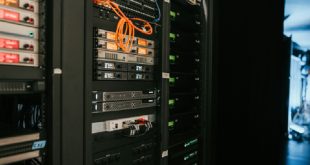Graphics drivers are the bridge between your operating system, games/applications, and the GPU hardware. Good drivers mean better performance, fewer crashes, and access to new features — bad or outdated drivers can cause graphical glitches, stuttering, or even system instability.
This guide focuses on practical, safe, and repeatable steps to get NVIDIA drivers onto your system and keep them current. You’ll also find specific notes relevant to searches and packages often associated with phrases like www.xnxubd 2022 nvidia drivers, including how to be cautious about third-party files and ambiguous naming.
What are GPU drivers and why they matter
A GPU driver is low-level software that translates OS or application instructions into commands your graphics card understands. They:
- Enable hardware acceleration for games and creative apps.
- Provide bug fixes and security patches.
- Introduce new features (ray tracing, DLSS, encoder/decoder updates).
- Improve stability and performance through optimizations.
Manufacturers (NVIDIA in this case) update drivers frequently to support new games, fix problems, and improve performance. Keeping drivers current is especially important if you play recent games or use GPU-accelerated applications.
About “www.xnxubd 2022 nvidia drivers” — what this phrase means and safety note
The phrase www.xnxubd 2022 nvidia drivers looks like a search-query style term that users type when seeking specific NVIDIA driver packages from 2022, or when they encounter unusual filenames or mirrors. Be careful: many search results with similar-sounding names or odd domains can lead to unofficial packages, repackaged installers, or ad-heavy pages.
Safety tips:
- Prefer official sources (NVIDIA’s official driver download pages or the GeForce Experience app).
- If you find a driver package named oddly (for example, with a long numeric/keyword-laden filename), verify its digital signature and source before running it.
- Avoid executables from random file-hosting sites. When in doubt, don’t run it.
This guide emphasizes using trusted methods first; if you must use a community mirror or archived driver (e.g., for legacy hardware), validate checksums and prefer reputable archives.
System requirements
| Component | Minimum / Recommended |
|---|---|
| Operating system | Windows 10 64-bit / Windows 11 64-bit (also Linux kernels supported by NVIDIA drivers) |
| GPU | NVIDIA GeForce, Quadro, or RTX series compatible with the specific driver version |
| Disk space | 2–6 GB free for installer + temporary files (more for full SDKs) |
| Admin rights | Required for installation and driver service changes |
| Internet | Recommended for latest downloads and GeForce Experience updates |
Preparing your PC before installing drivers
A clean, prepared system reduces the chance of conflicts.
- Create a System Restore point (Windows)
This lets you revert quickly if something goes wrong. - Backup important files
Always a good precaution for major driver or system changes. - Close resource-heavy apps
Close games, video editors, browsers, and unnecessary background apps. - Disable third-party overclocking tools temporarily
GPU/CPU overclocking software can interfere with driver installs. - Note current driver version
In Windows Device Manager or NVIDIA Control Panel, jot down current driver version in case you need to revert. - Uninstall old or conflicting drivers (optional)
If you have broken installations, use official uninstall tools or Windows Add/Remove Programs to remove old NVIDIA entries. - Check hardware compatibility
Make sure your GPU is supported by the driver version you plan to install.
How to download NVIDIA drivers — step-by-step (safe methods)
There are three safe ways to download and get NVIDIA drivers: NVIDIA manual download, GeForce Experience, and official OS package managers (Linux). I’ll show each.
Option A — Manual download from NVIDIA (recommended for precise control)
- Open your web browser and go to NVIDIA’s official driver download page (type: NVIDIA Driver Download in your search bar and choose the official result from NVIDIA Corporation).
Do not click suspicious file-hosting links with odd filenames; prefer the official site. - Select your product type (GeForce, TITAN, Quadro), product series (e.g., GeForce RTX 30 Series), exact product (e.g., GeForce RTX 3080), your OS, and language.
- Click “Search” and then download the latest WHQL-certified driver (or another specific version if you need legacy).
- Optionally, download the “Release Notes” to check bug fixes and known issues before installing.
Option B — GeForce Experience (recommended for gamers who want automatic updates)
- Install GeForce Experience (available from NVIDIA’s official site).
- Sign in (optional for some features).
- Open the “Drivers” tab — it automatically detects your GPU and suggests recommended drivers.
- Click “Download,” then “Express” or “Custom” install when prompted.
Option C — Linux package managers (for Ubuntu, Fedora, etc.)
- On Ubuntu/Debian: use
aptwith the appropriate NVIDIA PPA or the “Additional Drivers” tool in the GUI. - On Fedora: use
dnfand RPM Fusion repositories. - On Arch: use pacman and AUR packages or the official binary drivers in the repos.
Note: If you must fetch a driver that’s specifically labeled like www xnxubd 2022 nvidia drivers from an archive, treat it like an unofficial package: check file hashes (MD5/SHA256), scan for malware, and prefer community-trusted archives.
Installing NVIDIA drivers: express vs clean install
During installation, NVIDIA offers options like “Express” and “Custom (Advanced)” where you can pick a “Clean Install.” Below is a short table comparing them.
| Aspect | Express Install | Custom Install + Clean Install |
|---|---|---|
| Speed | Faster — installs recommended components | Slower — you pick components and can remove old settings |
| Settings retention | Preserves previous NVIDIA settings | Resets NVIDIA settings to defaults |
| Use case | Quick update or stable system | Fix persistent issues, corrupted profiles, driver conflicts |
| Recommended for | Routine updates | Troubleshooting or switching major driver versions |
Step-by-step: Express install
- Run the downloaded installer (right-click → Run as Administrator on Windows).
- Accept EULA, choose Express, and proceed.
- The installer will extract files, install driver components, and prompt for restart if needed.
Step-by-step: Custom install with Clean Install
- Run installer → choose Custom (Advanced).
- Check “Perform a clean installation”.
- Optionally deselect components you don’t need (e.g., HD Audio, PhysX if not required).
- Proceed and restart when prompted.
When to use a Clean Install:
- You had graphical issues after previous updates.
- You’re switching from a beta/experimental driver to a stable release.
- You observe artifacts/glitches that might be caused by leftover settings.
Updating drivers: best practices and tools
Keeping drivers updated is important, but blindly installing every new driver can sometimes introduce regressions. Use these best practices:
When to update
- New game release with advertised driver optimizations.
- Fixes for bugs you’re encountering.
- Security advisories from NVIDIA (rare but critical).
- New major features you want (DLSS improvements, new encoder features).
How to update safely
- Read release notes before updating; they highlight fixes and known issues.
- Prefer WHQL-certified drivers for maximum stability.
- Backup or create a restore point before major upgrades.
- Test after updating — run a quick game or benchmark and monitor temps and stability.
- Roll back quickly if you encounter problems (instructions in next section).
Tools to help
- NVIDIA GeForce Experience — automates detection and updates.
- Windows Update — sometimes offers drivers, but they may not be the latest.
- Driver management tools (third-party) — generally not recommended; prefer official tools.
How to roll back or uninstall a driver
Rollback via Device Manager (Windows)
- Open Device Manager → Display adapters → right-click NVIDIA GPU → Properties.
- Go to the Driver tab → click Roll Back Driver (if available).
- Follow prompts and restart.
Uninstall via Settings
- Open Settings → Apps → find NVIDIA Graphics Driver and related items → uninstall.
- Reboot and reinstall the desired driver.
Clean uninstall with Display Driver Uninstaller (DDU) — use carefully
DDU is a commonly used third-party tool for fully removing graphics drivers to ensure a truly clean install. If you use it:
- Download DDU from a trusted source (community-recommended).
- Boot Windows into Safe Mode.
- Run DDU and select GPU → NVIDIA → Clean and restart.
- Install the driver you prefer after reboot.
Important: DDU is powerful and effective, but always download it from reputable community sources and read instructions carefully.
Troubleshooting common driver issues
Here are common problems and practical fixes.
Problem: Black screen after installing drivers
- Boot into Safe Mode, use DDU to uninstall the driver, then reinstall a different (older or WHQL) version.
- Check monitor cable and input selection.
Problem: Game stuttering or drops after update
- Try rolling back to previous driver version.
- Use “Perform a clean installation” when reinstalling.
- Verify game files and reduce background processes.
Problem: High GPU temps or fan issues post-install
- Reinstall driver with default settings, check fan curve in third-party utilities (MSI Afterburner), and clean physical dust from PC.
Problem: Driver failed to install / installer stuck at “extracting”
- Run installer as Administrator.
- Disable antivirus temporarily (some antiviruses interfere).
- Use DDU in Safe Mode to remove previous drivers and retry.
Problem: NVidia Control Panel missing
- Reinstall drivers (Custom → check NVIDIA Control Panel).
- Ensure the display driver service is running (
nvsvcon older systems). - Sometimes reinstalling the “NVIDIA Graphics Driver” package restores it.
Frequently asked questions (FAQ)
Should I always install the latest driver?
Not always. If your current driver is stable and you don’t need fixes or new features, you can wait. For new game releases or bug fixes, updating is recommended.
Is GeForce Experience required?
No. GeForce Experience automates updates and provides features like ShadowPlay, but you can manually download drivers and skip it.
Can I use drivers meant for a different series (e.g., RTX drivers for GTX cards)?
Drivers are often unified across families, but always select drivers compatible with your specific GPU model.
What’s the difference between Game Ready and Studio drivers?
Game Ready drivers are optimized for gaming and new game releases. Studio drivers are validated for creative applications (video editing, 3D modeling) and emphasize stability for professional workflows.
How do I verify a driver file is legitimate?
Check the digital signature of the installer, verify checksum where provided, and prefer official NVIDIA downloads. Avoid unknown mirror sites.
Final checklist and recommendations
Quick install checklist
- Made a System Restore point.
- Noted current driver version.
- Closed heavy apps and disabled overclocking.
- Downloaded driver from a trusted source (NVIDIA or GeForce Experience).
- Chose Express or Custom (Clean Install) depending on needs.
- Rebooted and verified GPU performance/stability.
Recommended routine
- Check for driver updates monthly if you’re a casual user.
- Update more frequently (or when needed) if you’re gaming or using GPU-heavy apps.
- Read release notes before major driver updates.
- Keep backups and know how to roll back.
Appendix: Driver version tracking table (example)
Below is a sample table you can use in your notes to track which driver you installed and why.
| Date | Driver version | Reason for install | Notes (issues/performance) |
|---|---|---|---|
| 2025-10-12 | 536.86 WHQL | New game optimization | Stable, +8% fps on TestGame |
| 2024-07-03 | 527.56 WHQL | Studio app fix | No issues |
| 2022-11-01 | 512.95 (legacy) | Needed for old GPU | Required clean install |
Closing thoughts
Drivers are a deceptively important part of your PC experience: they determine how well your GPU communicates with games and apps. The phrase www.xnxubd 2022 nvidia drivers often appears in searches when users hunt for specific or legacy packages; it’s a reminder to be careful with source integrity. Prefer official downloads, validate files when using third-party archives, and follow the steps above for a smooth install and update process.
If you follow the preparation, download, and installation steps in this guide — and use the troubleshooting tips if anything goes sideways — you should be able to install and maintain NVIDIA drivers safely and confidently.
 Blogging Heros
Blogging Heros





